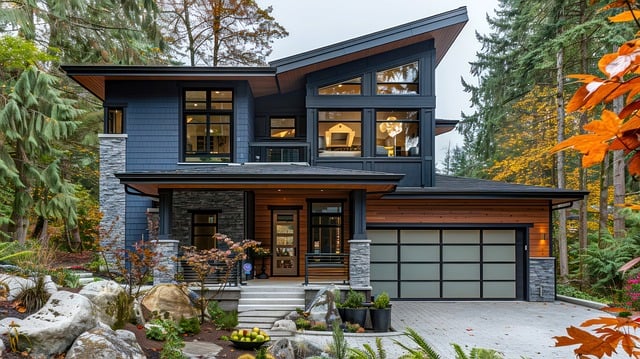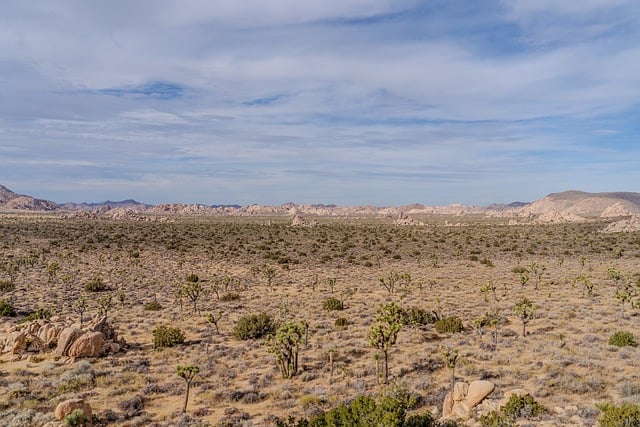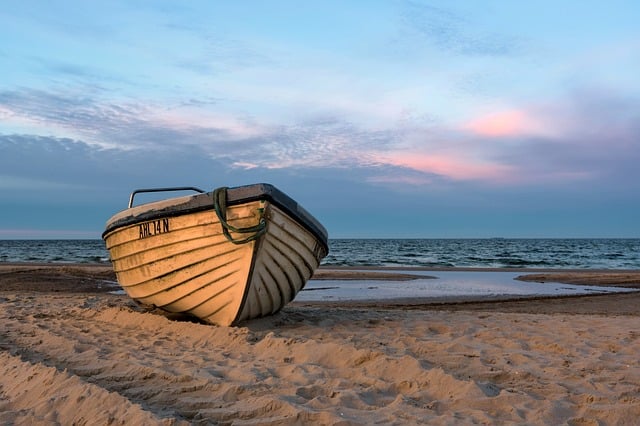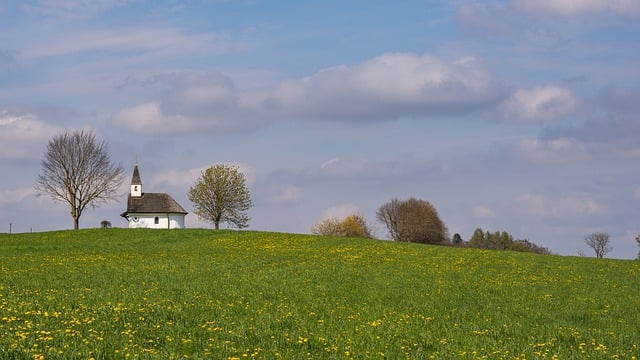This section advocates for incorporating sustainable and eco-friendly elements into garden and backyard design layouts. It emphasizes the use of native plants for their environmental benefits and adaptability to local conditions, as well as permeable surfaces to conserve water and protect soil health. Modern landscape layout ideas paired with efficient irrigation systems, such as drip irrigation, are recommended to optimize water conservation. Landscaping design tips suggest maximizing small spaces through vertical gardening and xeriscaping principles, ensuring that outdoor areas support local wildlife while being aesthetically pleasing and cost-effective. DIY landscape planning with landscape blueprint ideas is encouraged for those looking to create a sustainable garden layout that minimizes maintenance and environmental impact. Homeowners are guided to consider sun exposure, wind patterns, and other factors in their outdoor space planning to achieve a harmonious and functional environment that reflects a commitment to sustainability.
Embarking on a journey to harmonize your outdoor sanctuary with the principles of sustainability has never been more essential. This article delves into the transformative power of eco-friendly materials in garden and backyard design, offering a tapestry of landscape layout ideas that blend aesthetic appeal with environmental stewardship. From modern landscape layouts that emphasize sustainability to creative backyard designs that prioritize green living, we explore how thoughtful planning can minimize waste, promote biodiversity, and create habitats for thriving local ecosystems. As you navigate through garden layout planning, backyard design layouts, and landscaping design tips, you’ll discover a world where eco-materials elevate your outdoor spaces into a symphony of sustainability. Whether you’re crafting a green oasis in a small yard or embarking on a larger project, these landscape blueprint ideas will guide you towards an environmentally conscious and beautifully designed outdoor area that benefits both your home and the planet.
- Maximizing Sustainability with Modern Landscape Layouts: Eco-Friendly Ideas for Garden Planning
- – Emphasize the importance of integrating eco-friendly materials into garden design, highlighting modern landscape layouts that prioritize sustainability and environmental consciousness.
- – Discuss how garden layout planning can be a reflection of sustainable living practices, incorporating native plants, permeable surfaces, and water-wise irrigation systems.
- – Offer tips on outdoor space planning with a focus on minimizing waste, promoting biodiversity, and creating habitats for local wildlife.
Maximizing Sustainability with Modern Landscape Layouts: Eco-Friendly Ideas for Garden Planning

When embarking on garden planning with a focus on sustainability, integrating eco-friendly materials and designs is paramount. Landscape layout ideas that prioritize native plants and permeable surfaces can significantly reduce water usage and prevent soil erosion. For those with a small yard or looking for compact layout solutions, selecting drought-resistant vegetation and incorporating xeriscaping principles can transform an outdoor space into a low-maintenance haven while promoting biodiversity.
In the realm of modern landscape layouts, garden planning has evolved to not only complement the architectural style of homes but also to function as a harmonious ecosystem. Backyard design layouts that incorporate raised beds for vegetable gardening and natural ponds for water filtration are not only aesthetically pleasing but also serve practical purposes. Landscaping design tips such as these can turn any backyard into an oasis that supports local wildlife and reduces the carbon footprint.
For DIY enthusiasts, landscape blueprint ideas can be a starting point for personalized garden layout planning. Utilizing online resources and software can help visualize the potential of small yard layout ideas, ensuring efficient use of space. By considering elements like sun exposure and wind patterns during the planning stage, homeowners can create an outdoor sanctuary that is both beautiful and beneficial to the environment. With careful consideration and eco-conscious choices, your garden can become a testament to sustainable living within the confines of modern landscape layouts.
– Emphasize the importance of integrating eco-friendly materials into garden design, highlighting modern landscape layouts that prioritize sustainability and environmental consciousness.

In contemporary garden design, the integration of eco-friendly materials is paramount, reflecting a shift towards sustainability and environmental consciousness. Modern landscape layouts often incorporate recycled materials, native plants, and permeable surfaces to minimize environmental impact while enhancing outdoor spaces. Landscape layout planning that prioritizes these elements not only contributes to the health of the planet but also offers a harmonious blend of functionality and aesthetics. For instance, selecting drought-resistant plants and using water-wise irrigation systems in backyard design layouts can significantly reduce water usage, making outdoor space planning both efficient and environmentally responsible. Additionally, incorporating renewable energy sources, like solar-powered garden lights, into the landscaping design tips ensures that gardens are not only beautiful but also powered by clean energy.
For those with smaller yards, DIY landscape planning can maximize the use of space with creative layout ideas, such as vertical gardens and multi-purpose planting beds that combine ornamental and edible plants. Small yard layout ideas often focus on creating a cohesive blueprint that optimizes light, space, and garden functionality. Embracing eco-friendly practices in landscape blueprint ideas, from selecting sustainable materials to thoughtful hardscape placement, can transform even the smallest of outdoor spaces into a tranquil retreat that embodies modern sustainability principles. These thoughtful design considerations not only elevate the aesthetic appeal of the garden but also contribute to the well-being of the environment and its inhabitants.
– Discuss how garden layout planning can be a reflection of sustainable living practices, incorporating native plants, permeable surfaces, and water-wise irrigation systems.

Integrating eco-friendly materials and practices into garden layout planning is a testament to sustainable living. By selecting native plants, homeowners can promote biodiversity while reducing the need for supplemental watering. These local flora are adapted to the climate and soil conditions, minimizing the environmental impact and fostering resilience in the landscape. Additionally, incorporating permeable surfaces such as gravel or porous pavers can manage stormwater runoff, enriching soil health and preventing water pollution. Furthermore, water-wise irrigation systems like drip irrigation or rainwater harvesting structures are crucial components of modern landscape layouts, ensuring efficient use of water resources. Landscaping design tips often emphasize the importance of outdoor space planning that harmonizes with natural environments, which can be achieved through thoughtful DIY landscape planning tailored to small yard layout ideas, even in urban settings.
Incorporating sustainable practices into garden layout planning not only reflects a commitment to the environment but also contributes to cost savings and a healthier ecosystem. A well-planned landscape blueprint ideas can include zones for food production, areas for recreation, and spaces for wildlife habitats, all designed with the principles of sustainability in mind. By adopting such practices, homeowners can create a harmonious outdoor space that is both functional and in tune with the surrounding environment. Outdoor space planning that emphasizes native landscaping not only supports local ecosystems but also reduces maintenance needs and promotes a self-sustaining garden layout that requires minimal input while providing maximum benefits.
– Offer tips on outdoor space planning with a focus on minimizing waste, promoting biodiversity, and creating habitats for local wildlife.

When planning an outdoor space that is both eco-conscious and inviting, integrating landscape layout ideas that promote sustainability is paramount. Garden layout planning can be optimized for biodiversity by incorporating a variety of native plants, which not only support local wildlife but also reduce the need for irrigation and chemical fertilizers. Backyard design layouts that include natural habitats, such as rock piles or woodpiles, provide refuge for beneficial insects and animals. Additionally, using landscape blueprint ideas that leave untouched corners of the garden to encourage wild spaces can significantly enhance the biodiversity of your outdoor area.
Incorporating modern landscape layouts into small yards requires thoughtful planning. DIY landscape planning can be achieved by maximizing vertical space with climbing plants or installing raised beds to grow food or native flowers, which serve as food sources for pollinators. A well-thought-out design should also include elements like rain gardens or compost bins, which help manage water runoff and organic waste, respectively. These practices not only contribute to a healthier environment but also create an aesthetically pleasing outdoor space that harmonizes with nature. By adhering to landscaping design tips that emphasize sustainability, homeowners can enjoy their gardens while minimizing their ecological footprint.
In concluding our exploration of incorporating eco-friendly materials into garden and landscape designs, it’s evident that the choices we make in our backyard design layout significantly impact the environment. Adopting modern landscape layouts that emphasize sustainability is not merely a trend but a commitment to safeguarding our planet for future generations. By integrating landscape blueprint ideas that include native plants, permeable surfaces, and water-wise irrigation systems, we can achieve outdoor space planning that is both aesthetically pleasing and environmentally responsible. Whether you’re crafting a landscape layout from scratch or revising an existing design, DIY landscape planning offers opportunities to promote biodiversity and foster habitats for local wildlife. Embracing these eco-conscious strategies not only enhances the beauty of your garden but also contributes to the health of our ecosystems. As we continue to innovate in landscaping design tips, let us prioritize sustainability in every garden and backyard, ensuring that our outdoor spaces are a testament to our dedication to the environment.
